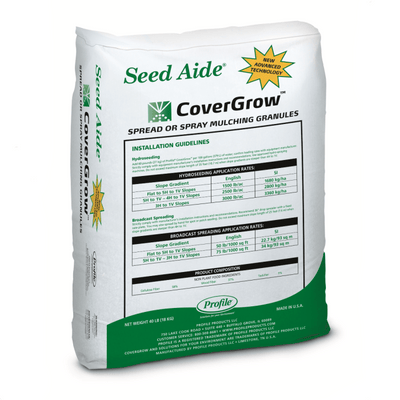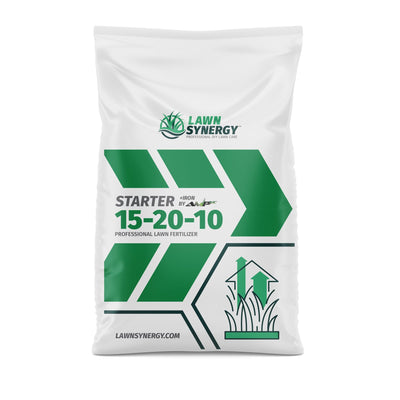You've done the hard work: cleared the ground, spread your seed, and now you're staring at your hose wondering how often to water grass seed to make sure it actually grows.
This step can make or break your lawn. Too much water washes the seed away. Too little? You're back to bare dirt.
At Lawn Synergy, we've spent decades helping DIYers grow lawns that look like they hired a crew — without overwatering, underfeeding, or guessing. This guide gives you the proven watering schedule we use on estate-level properties, adapted for your backyard. Follow it, and your seed will thrive.
Why Watering Is Critical for Grass Seed Success
Watering is what activates the germination process. Once grass seed is in the soil, it needs steady moisture to soften the seed coat, trigger internal enzymes, and allow the embryo to begin root development. Without consistent water, none of that happens, no matter how much seed you spread.
The top 1/4 inch of soil must stay evenly moist for 10 to 21 days, depending on grass type and weather.
Dry spells, even just a few hours long, can kill off germinating seeds or lead to uneven sprouting. Overwatering can also create problems: puddling, rot, or washing seeds out of place.
If you're wondering how thick to spread grass seed, that decision only matters when your watering is dialed in. For the best outcome, pair correct seeding rates with pro-grade blends like Crown Jewel Elite Tall Fescue, then commit to a watering plan that keeps your soil conditions stable.

What this article covers:
- How Often to Water New Grass Seed
- Daily Watering Schedule by Stage
- Adjusting for Weather and Soil Type
- Common Mistakes When Watering Grass Seed
- How to Know When to Reduce Watering
How Often to Water New Grass Seed
New seed must stay evenly moist from the moment it's spread until roots are 2 to 3 inches deep.
Too much water creates runoff and puddles that move seed around or expose it to birds and the sun. Too little causes the seed to dry out before germinating. Your job is to find the balance: light, steady moisture multiple times a day in the early stages.
Daily Watering Schedule by Stage
Every phase of germination has different watering needs. Here's the daily breakdown to follow for strong results.
Days 1–10: Water Two to Three Times Daily
Immediately after seeding, begin watering with a fine spray or oscillating sprinkler. Apply just enough to moisten the top 1/4 inch of soil without puddling.
Water early morning, midday (if possible), and early evening, adjusting based on wind and heat. If you're unsure how to keep grass seed from washing away, use straw blankets or mulch on slopes, and avoid pressure nozzles or hose blasts.
Days 11–21: Scale Back to Once a Day
Once sprouts appear and reach one inch tall, reduce to a single daily watering. Increase duration slightly to push moisture down to the top 1 to 2 inches of soil.
This phase transitions your lawn from seed care to root development. Use this period to observe dry zones or uneven germination and adjust manually with a hose where needed.

Week Four Onward: Water Every Two to Three Days
As grass thickens and roots reach deeper, shift to twice-weekly waterings. Each session should soak the top 4 inches of soil.
This teaches roots to seek moisture downward and develop drought resilience. If you're wondering how soon after treating for grubs can you plant grass seed, always check product labels. Some require 7 to 14 days before seeding resumes.
Adjusting for Weather and Soil Type
Your watering schedule is only as good as your conditions. Soil type and climate can speed up or slow down how water is absorbed or lost.
Sandy Soil
In fast-draining sand, moisture escapes quickly. You may need to water three times daily during the early stage. Use shorter, more frequent sessions to avoid soaking and runoff.
Clay Soil
Clay holds water longer but drains slowly. Reduce watering frequency to avoid puddles, and always check for soggy spots. Clay-heavy yards benefit from aeration before seeding.
Hot or Windy Conditions
Heat and wind can dry out the soil surface in under an hour. Use midday watering as a supplement, not a replacement for your morning and evening cycles.
Common Mistakes When Watering Grass Seed
Even experienced homeowners can sabotage seeding by watering incorrectly. Here are some common pitfalls and how to avoid them.
1. Heavy Watering That Moves Seed
Dumping water all at once leads to seed displacement and uneven patches. Use light sprays instead. When laying down your grass seed, factor in small overages to account for minor loss from wind or runoff.

2. Skipping a Day During Germination
One dry cycle during early sprouting can undo progress and kill exposed roots. Use timers or set alerts to stay consistent. If you're unsure how much grass seed to use for overseeding thinned patches, always rewater those areas gently and evenly.
3. Watering After Dark
Late-night watering creates cool, wet conditions that invite fungus. Stick to early morning or early evening windows for best results.
How to Know When to Reduce Watering
Most lawns are ready to reduce watering once grass reaches 2 inches in height and shows even coverage. That means roots are strong enough to pull moisture from deeper layers.
Signs to look for:
- Uniform green coverage
- Minimal bare patches
- Seedlings that hold color overnight without wilting
At this stage, it's the perfect time to apply starter fertilizer to feed those growing roots. Water it in lightly and return to a twice-weekly schedule that promotes depth over surface saturation.
Conclusion
Getting clear on how often to water grass seed takes the guesswork out of seeding. With a consistent, stage-based watering plan and expert timing, you can turn bare soil into a dense, vibrant lawn without hiring a service company.
At Lawn Synergy, we deliver estate-level results with pro-grade seed, custom fertilizer blends, and detailed support. Explore our DIY-friendly lineup or reach out anytime. We're here to help your lawn grow strong.
Ready to learn more about lawn care? Check out these articles:





